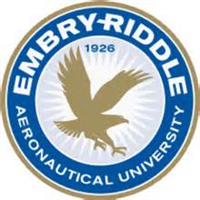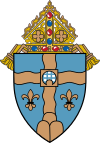What do they do?
Assemble, fit, fasten, and install parts of airplanes, space vehicles, or missiles, such as tails, wings, fuselage, bulkheads, stabilizers, landing gear, rigging and control equipment, or heating and ventilating systems.
Also known as:
A&P Technician (Airframe and Powerplant Technician), Aircraft Line Assembler, Assembler, Assembler Technician, Assembly Riveter, Helicopter Technician, Sheet Metal Assembler and Riveter (SMAR), Sheet Metal Mechanic, Structures Mechanic, Structures Technician
-
-16.1%
Change
Select a state to see its job growth rate ranking3,200Job Openings
Select a state to see its net job growth ranking
Colleges with the most graduates that become Aircraft Structure, Surfaces, Rigging, and Systems Assemblers
-
Vaughn College of Aeronautics and Technology
Flushing, NY
-
National Aviation Academy of Tampa Bay
Clearwater, FL
-
Aviation Institute of Maintenance-Atlanta
Duluth, GA
-
Aviation Institute of Maintenance-Dallas
Irving, TX
-
Spartan College of Aeronautics & Technology
Inglewood, CA
Looking for colleges that offer a specific major? Use the College Match Tool to find your best-matched schools and discover your estimated Net Price!
- Doctorate or Professional Degree (<1%)
- Master's degree (1%)
- Bachelor's degree (6%)
- Associate's degree (7%)
- Some college, no degree (21%)
- High school diploma equivalent (48%)
- Less than high school diploma (16%)
People in this career often know a lot about:
- Mathematics - Knowledge of arithmetic, algebra, geometry, calculus, statistics, and their applications.
- Education and Training - Knowledge of principles and methods for curriculum and training design, teaching and instruction for individuals and groups, and the measurement of training effects.
- Mechanical - Knowledge of machines and tools, including their designs, uses, repair, and maintenance.
- English Language - Knowledge of the structure and content of the English language including the meaning and spelling of words, rules of composition, and grammar.
- Production and Processing - Knowledge of raw materials, production processes, quality control, costs, and other techniques for maximizing the effective manufacture and distribution of goods.
- Design - Knowledge of design techniques, tools, and principles involved in production of precision technical plans, blueprints, drawings, and models.
People in this career often have talent in:
- Problem Sensitivity - The ability to tell when something is wrong or is likely to go wrong. It does not involve solving the problem, only recognizing that there is a problem.
- Near Vision - The ability to see details at close range (within a few feet of the observer).
- Finger Dexterity - The ability to make precisely coordinated movements of the fingers of one or both hands to grasp, manipulate, or assemble very small objects.
- Information Ordering - The ability to arrange things or actions in a certain order or pattern according to a specific rule or set of rules (e.g., patterns of numbers, letters, words, pictures, mathematical operations).
- Visualization - The ability to imagine how something will look after it is moved around or when its parts are moved or rearranged.
- Manual Dexterity - The ability to quickly move your hand, your hand together with your arm, or your two hands to grasp, manipulate, or assemble objects.
People in this career often do these activities:
- Assemble metal or plastic parts or products.
- Review blueprints or other instructions to determine operational methods or sequences.
- Adjust vehicle components according to specifications.
- Assemble metal structures.
- Inspect installed components or assemblies.
- Repair parts or assemblies.
- Replace worn equipment components.
- Reshape metal workpieces to established specifications.
- Trim excess material from workpieces.
- Cut industrial materials in preparation for fabrication or processing.
- Align parts or workpieces to ensure proper assembly.
- Operate metal or plastic forming equipment.
- Draw guide lines or markings on materials or workpieces using patterns or other references.
- Signal others to coordinate work activities.
- Assemble electrical or electronic equipment.
- Install mechanical components in production equipment.
- Clean workpieces or finished products.
- Apply lubricants or coolants to workpieces.
- Operate cutting equipment.
- Connect supply lines to production equipment or tools.
- Monitor equipment operation to ensure proper functioning.
- Assemble electromechanical or hydraulic systems.
- Mount attachments or tools onto production equipment.
- Mark products, workpieces, or equipment with identifying information.
- Measure dimensions of completed products or workpieces to verify conformance to specifications.
- Solder parts or workpieces.
- Operate welding equipment.
- Sort recyclable materials.
This page includes data from:

 Occupation statistics: USDOL U.S. Bureau of Labor Statistics Occupational Employment Statistics
Occupation statistics: USDOL U.S. Bureau of Labor Statistics Occupational Employment Statistics









